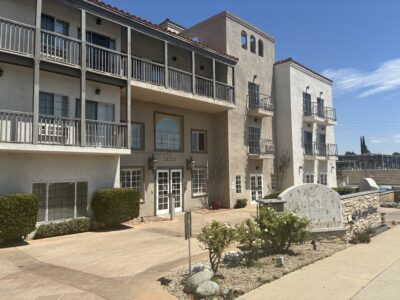The 2nd Appellate District of California granted Cemex a little more time Wednesday to make its argument for why it shouldn’t need to publicly re-apply for its water rights in Soledad Canyon.
The international mining conglomerate based in Houston has the mining rights to extract 56 million tons of aggregate, a building material seen as a major need for the area’s future growth and development.
The State Water Resources Control Board argued in a June filing that Cemex’s actions are premature, despite its plans being more than 30 years in the making.
The mining site had been proposed for the canyon just east of the city’s borders off Highway 14, based on contracts purchased by Cemex’s predecessor in 1990 and pre-existing mining activity in the area.
However, opponents, including the city of Santa Clarita, have said that, since the rights were purchased, the surrounding canyon has completely changed.
Politics and lawsuits have played a major role in the area’s mining for decades.
Political, legal fight
Political efforts by former Sen. Scott Wilk, R-Santa Clarita, and Assemblywoman Pilar Schiavo, D-Chatsworth, passed a bill to mandate a hearing for any permits as old as Cemex’s in 2024.
Then Gov. Gavin Newsom vetoed the bill, stating the State Water Resources Control Board planned to notice the water permits, which was the only project impacted by the bill.
Cemex filed suit before the State Water Resources Control Board had made its noticing decision, according to the “State Board,” which is what the agency is called in its filing.
Cemex has declined to comment on any of its ongoing litigation.
That was denied in L.A. Superior Court last year by Judge Steven Goorvitch, so Cemex is challenging the decision to the 2nd Appellate District.
‘State Board’ response
A response filed in June by the State Board says Goorvitch correctly ruled that Cemex was premature with its lawsuit, because it was trying to deny a required administrative process — whether to have the hearing itself — not a decision made by a hearing.
But the board’s answer also implies the door is open for an appeal of the decision regardless, likely to add even more time before an actual decision is made on the water permits.
“The well-established rule of finality is that CEMEX must bring any challenges it may have about the State Board’s processing of the application by filing a single petition for writ of mandate after the State Board makes a final decision on the application,” according to the State Board.
Cemex was scheduled to file a response to the State Board on Wednesday but asked for an extension Monday until Aug. 29.
The city has argued the mine would destroy millions that have been spent over the past three decades purchasing open space to preserve a “green belt” around the SCV connecting the area with paseos and hiking trails.
Opponents of the mine also argue that the facility would add hundreds of truckloads daily to an already congested Highway 14.
Cemex plan
The miners are seeking permission to use about 322 acre-feet of water each year, which is the average annual amount needed for about 650 homes.
Cemex does not want the public process because it would allow new parties “to intervene and new protests are allowed to be filed,” according to its previous argument, potentially costing the company millions.
“In 1991, the petitioner’s predecessor-in-interest filed an application to appropriate water for its Soledad Canyon Project, which was a proposal to develop a sand and gravel mine on an approximately 500-acre site in the unincorporated Soledad Canyon area of Los Angeles County,” according to Cemex’s court filing. (The county was sued into agreeing to the project in 2004 via a consent decree, after county supervisors were accused of abusing the state’s environmental laws in delaying the project.)
“Cemex will need to engage new experts and complete new technical studies. The protests and responding reports will need to be analyzed, addressed and decided. All of which is sure to cause years of additional delay. Judicial review of the re-noticing decision at the end of that process would be meaningless,” according to the argument from Kerry Shapiro, chair of the Natural Resources and Mining Group for Jeffer Mangels Butler & Mitchell LLP, which represents Cemex, referring to a Superior Court ruling that supported the State Board.
Since the original contracts were granted in 1991, there have been millions invested in residential communities surrounding the site.
One of the more recent changes to the area has been the county’s approval of 492 homes for the Spring Canyon Project.
The State Board is arguing that Cemex’s application remains pending for the board, with several questions remaining. But it will be publicly noticed when completed.
“There are four outstanding and unresolved protests: The State Board’s public water rights database shows that three parts of CEMEX’s application — protest resolution, water availability analysis and consideration of public trust resources — are designated with the “(A)” status, indicating that ‘the process is with the applicant for action,’” according to the State Board’s response.








